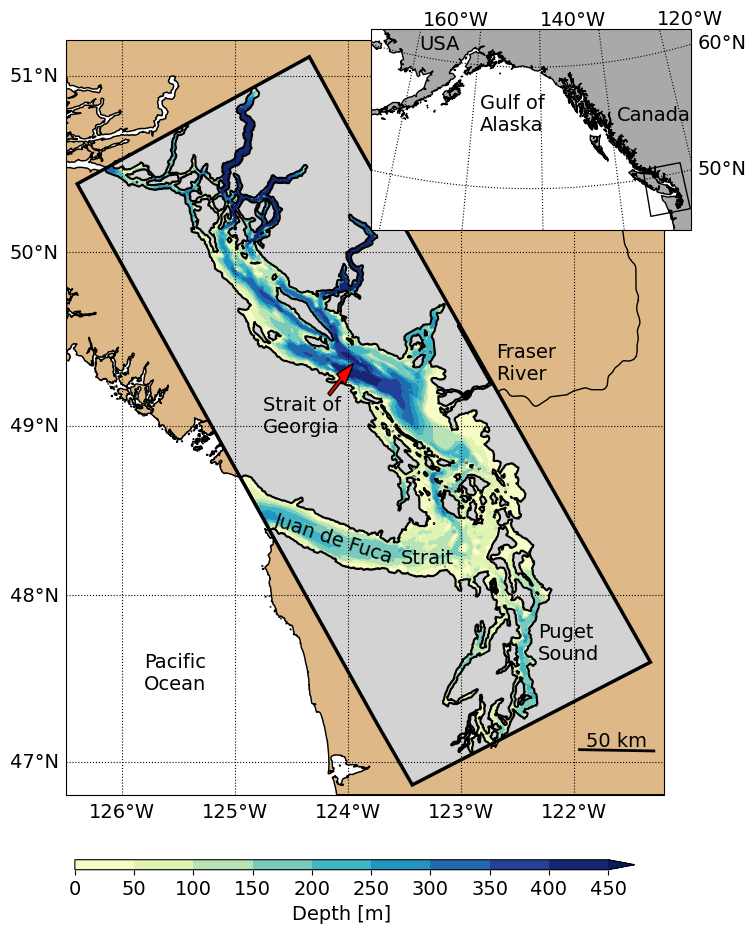My research
Doctoral thesis project
Thesis: Wind-driven upwelling and nutrient supply in a productive estuarine sea. (2022) doi:10.14288/1.0418447
Supervisor: Susan Allen university profile
Institution: University of British Columbia

For my doctoral thesis project, I explored wind-driven circulation and upwelling in the Salish Sea on the US/Canadian Pacific coast using a high-resolution configuration of the NEMO ocean model called SalishSeaCast. Ocean upwelling is an important source of nutrients for phytoplankton, and ocean circulation affects the trajectories of pollutants and floating objects. I found that upwelling occurs frequently in the largest basin of the Salish Sea, the Strait of Georgia, and that upwelling depth is controlled by a combination of wind speed and stratification strength. This phenomenon presents an important link between climate and seasonal productivity that may have implications for higher organisms like Pacific salmon.
I used a combination of methods and resources to complete this project including:
- gridded meteorological forcing data sets and oceanographic sampling data
- collaboratively-produced long hindcasts of SalishSeaCast
- my own idealized and experimental NEMO simulations
- post-processing data methods including principal component analysis and spectral analysis
- theoretical models
Additionally, I used several software and computational tools including:
- Python and data processing/analysis/visualization libraries like NumPy, SciPy, Xarray and Matplotlib
- Fortran-based NEMO source code
- netCDF and the NCO command line tools
- high-performance computing and parallel processing on remote clusters
My doctoral research was supported by the Canadian Marine Environmental Observation, Prediction and Response Network (MEOPAR), Ocean Networks Canada, the Pacific Salmon Foundation and the Digital Research Alliance of Canada.
SalishSeaCast

I have also contributed to the ongoing development of the SalishSeaCast model. SalishSeaCast is a collaborative modelling project based at the University of British Columbia with a range of applications including semi-operational forecasting, storm surge, circulation, oil spills, microplastics, lower trophic ecosystem dynamics and ocean acidification.
Details about the project and links to results and additional resources can be found at https://salishsea.eos.ubc.ca/nemo/.
My most recent contribution to SalishSeaCast was an evaluation of the surface velocity, temperature and salinity fields against surface drifter and CTD data sets, and a tuning of the default NEMO surface wave breaking parameterization. This work is summarized in Chapter 2 of my Ph.D. thesis.
Additionally, I have contributed Python code to the SalishSeaTools package, and have developed work flows for various team research tasks such as particle tracking, downloading data and mapping.
